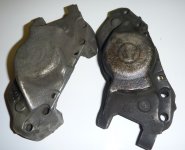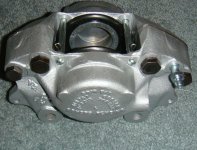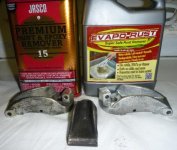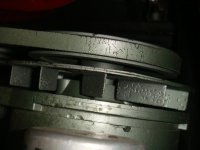Offline
I'm getting my Jag calipers ready for rebuild. Have cleaned off all loose grease and dirt using laquer thinner but they're still really grungy. I'm planning on painting them.
Do they have to be media blasted or is there another chemical I can clean them up with which won't etch the piston bores?
 These are typical but all the pieces are similar.
These are typical but all the pieces are similar.
Do they have to be media blasted or is there another chemical I can clean them up with which won't etch the piston bores?
 These are typical but all the pieces are similar.
These are typical but all the pieces are similar.
 Hi Guest!
Hi Guest!

 smilie in place of the real @
smilie in place of the real @
 Pretty Please - add it to our Events forum(s) and add to the calendar! >>
Pretty Please - add it to our Events forum(s) and add to the calendar! >> 






